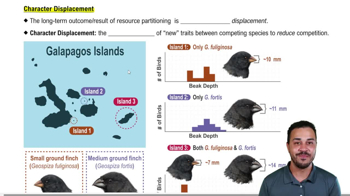Choose the pair of terms that correctly completes this sentence: Catabolism is to anabolism as ____________ is to ____________.
a. exergonic; spontaneous
b. exergonic; endergonic
c. free energy; entropy
d. work; energy
 Verified step by step guidance
Verified step by step guidance Verified video answer for a similar problem:
Verified video answer for a similar problem:



 2:17m
2:17mMaster Introduction to Metabolism with a bite sized video explanation from Jason
Start learning